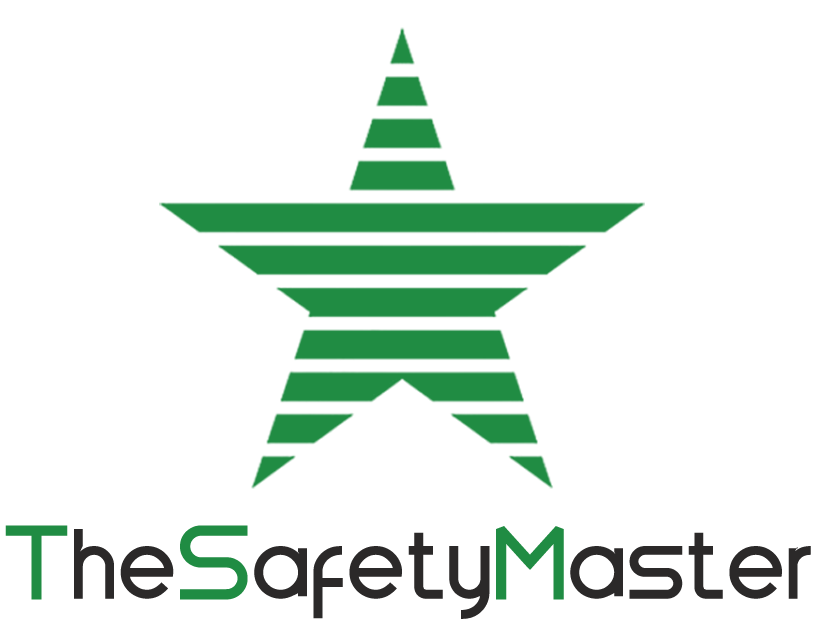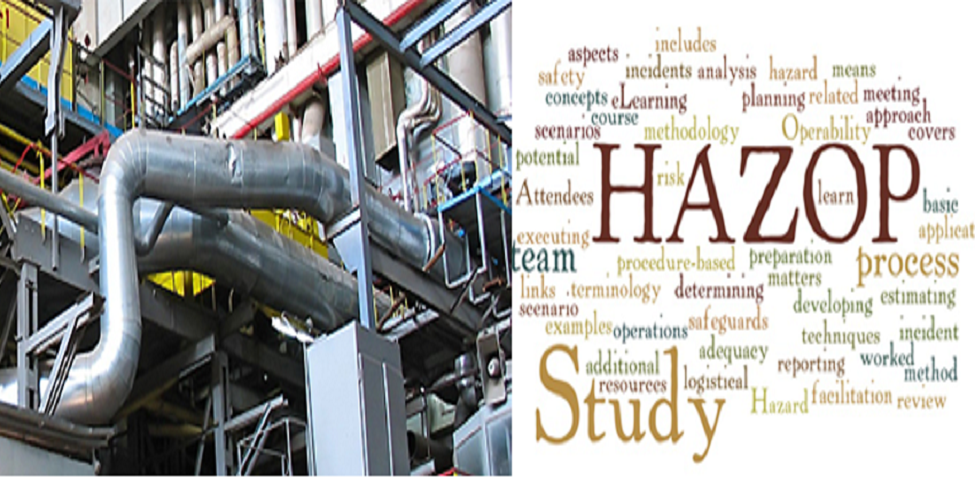HAZOP, LOPA, and SIL Study Services in Thailand – Ensuring Safe Operations

Fire Audit, Behavioural Safety & Full-Spectrum Safety Consultancy: What Delhi NCR Organisations Should Prioritise in 2025
November 4, 2025
Why Safety Audits Are Essential for Thailand’s Growing Industries in 2025
November 6, 2025In Thailand’s rapidly growing industrial landscape, process safety has become more than a compliance requirement—it’s a moral and strategic responsibility. Industries such as oil & gas, petrochemicals, pharmaceuticals, food processing, and manufacturing all depend on complex systems where even minor failures can result in catastrophic consequences. That’s where HAZOP, LOPA, and SIL study services come in. These methodologies are vital tools for identifying, analyzing, and mitigating risks in industrial operations to ensure safety, reliability, and sustainability.
In this blog, we’ll explore how these studies—conducted by expert safety professionals—form the backbone of process safety in Thailand, and how companies like The Safety Master are helping organizations achieve international safety excellence.
Understanding the Foundations of Process Safety
Before diving into each study, it’s essential to understand the broader context—Process Safety Management. This systematic framework focuses on preventing the release of hazardous substances that could harm people, property, or the environment. It integrates engineering, management, and operational controls to reduce risks throughout the lifecycle of a process.
An effective Process Safety Management program involves identifying potential hazards, implementing preventive measures, and continuously improving safety performance. When paired with advanced risk assessment methods such as HAZOP, LOPA, and SIL studies, it becomes a robust defense mechanism against industrial incidents.
What is a HAZOP Study?
A Hazop Study (Hazard and Operability Study) is a structured and systematic technique used to identify potential hazards and operational problems within a process design. It’s one of the most widely recognized tools in the process industry and is typically conducted during the design or modification phase of a project.
Objectives of HAZOP Study:
- To identify potential deviations from design intent.
- To evaluate their causes and consequences.
- To assess the adequacy of existing safeguards.
- To recommend corrective or preventive actions.
How It Works:
A multidisciplinary team—comprising process engineers, safety professionals, operators, and maintenance personnel—systematically reviews every part of the process. They use guide words such as “More,” “Less,” “No,” “Reverse,” and “Other than” to explore possible deviations in parameters like pressure, flow, temperature, and level.
For instance, a deviation like “More Pressure” might lead to equipment failure or rupture. The team then analyzes the root cause, evaluates existing safeguards, and suggests improvements.
Benefits of HAZOP Study:
- Early identification of process hazards.
- Reduction in accident potential.
- Improved design integrity and operability.
- Compliance with international standards such as IEC 61882.
Layer of Protection Analysis (LOPA): A Quantitative Extension
While HAZOP identifies hazards qualitatively, Layer of Protection Analysis (LOPA) goes a step further by quantifying the risk. It’s a semi-quantitative risk assessment technique that evaluates the effectiveness of each safety layer and determines whether the overall risk is within acceptable limits.
Key Principles of LOPA:
- Each process risk is mitigated through “layers of protection.”
- These layers may include engineering controls, alarms, operator actions, safety instrumented systems (SIS), and physical barriers.
- Each layer must be independent and reliable.
LOPA Process Steps:
- Define the Hazardous Scenario: Identify hazardous events from HAZOP results.
- Determine the Initiating Event Frequency: Estimate how often the scenario might occur.
- Identify Independent Protection Layers (IPLs): Assess existing barriers and their failure probabilities.
- Calculate Risk Reduction Factor (RRF): Measure the level of risk reduction achieved by the IPLs.
- Compare Against Risk Tolerability Criteria: Determine if additional safeguards are needed.
Why LOPA Matters:
LOPA bridges the gap between qualitative and quantitative analysis. It provides a clear justification for safety investments, ensuring that resources are allocated efficiently to mitigate the most critical risks.
In Thailand, industries following OSHA and IEC guidelines are increasingly adopting LOPA to strengthen their risk management framework.
Safety Integrity Level (SIL) Study: Ensuring System Reliability
A Safety Integrity Level (SIL) Study is an integral part of evaluating Safety Instrumented Systems (SIS). It measures how reliable and effective these systems are in preventing hazardous events.
Understanding SIL:
SIL is categorized into four levels—SIL 1 to SIL 4—with SIL 4 representing the highest level of risk reduction. Each level corresponds to a range of Probability of Failure on Demand (PFD).
| SIL Level | Risk Reduction Factor (RRF) | Probability of Failure on Demand (PFD) |
|---|---|---|
| SIL 1 | 10–100 | 0.1–0.01 |
| SIL 2 | 100–1000 | 0.01–0.001 |
| SIL 3 | 1000–10,000 | 0.001–0.0001 |
| SIL 4 | >10,000 | <0.0001 |
SIL Study Steps:
- Identify Safety Instrumented Functions (SIFs): Define the function and its safety objective.
- Assess Risk Reduction Requirement: Determine the SIL target based on LOPA results.
- Verify System Design: Ensure instrumentation meets the target SIL through redundancy, diagnostics, and reliability analysis.
- Maintain and Validate: Regularly test and maintain systems to ensure SIL integrity.
SIL studies provide assurance that the safety systems are capable of performing their intended functions with the required reliability. This is especially vital in Thailand’s petrochemical and oil refineries, where automated systems protect against severe consequences like explosions or toxic releases.
Interlinking HAZOP, LOPA, and SIL
These three studies are interconnected in a layered safety approach:
- HAZOP identifies hazards and deviations.
- LOPA quantifies the risk and determines the adequacy of protection layers.
- SIL ensures that safety instrumented systems meet the required performance standards.
Together, they form a comprehensive process safety lifecycle—moving from hazard identification to quantitative analysis and functional verification.
The Importance of Safety Audits and Fire Audits in Thailand
Beyond these specialized studies, industries must also perform regular audits to verify compliance and operational safety.
1. Safety Audit
A Safety Audit systematically examines workplace safety programs, procedures, and conditions to ensure compliance with both local and international standards. It helps identify unsafe practices, equipment deficiencies, and gaps in training.
Key Benefits:
- Prevents workplace incidents and injuries.
- Ensures compliance with Thai and global regulations.
- Builds a strong safety culture.
- Enhances employee morale and confidence.
2. Fire Audit
Given the increasing industrial density in Thailand, fire safety is paramount. A Fire Audit evaluates the adequacy of fire detection, prevention, and control systems in industrial and commercial establishments.
Fire Audit Objectives:
- Identify fire hazards and assess fire load.
- Check readiness of fire-fighting equipment.
- Evaluate evacuation plans and emergency preparedness.
- Recommend improvements to minimize fire risks.
Conducting these audits ensures compliance with Thailand’s safety codes and international fire safety standards, helping companies safeguard assets and human lives.
Why Choose The Safety Master for Safety Studies in Thailand?
The Safety Master is one of the leading Safety Consultant organizations offering end-to-end risk assessment and safety management solutions in Thailand and across Asia. Their expertise spans multiple domains including process safety, occupational health, industrial hygiene, and fire safety.
Key Advantages of Partnering with The Safety Master:
- Comprehensive Expertise: Certified professionals with deep industry experience conduct detailed HAZOP, LOPA, and SIL studies aligned with international standards like IEC 61508, 61511, and OSHA PSM.
- Advanced Tools and Techniques: The Safety Master uses cutting-edge risk assessment software and simulation tools to ensure precision and reliability in every analysis.
- Tailored Approach: Each facility is unique. The company provides customized solutions based on process complexity, risk profile, and local regulatory requirements.
- Training and Capacity Building: They don’t just assess risks—they empower your workforce. Through workshops and on-site training, they enhance the competency of engineers, operators, and safety officers.
- End-to-End Compliance Support: From documentation to implementation, The Safety Master ensures full regulatory compliance with Thailand’s Department of Industrial Works (DIW) and global standards like ISO 45001.
Building a Stronger Safety Culture
Implementing HAZOP, LOPA, and SIL studies is not a one-time event—it’s an ongoing commitment. Sustainable safety performance requires a proactive culture where risk awareness and prevention are embedded in everyday operations.
Companies must integrate process safety into every decision—from design and procurement to maintenance and decommissioning. Regular safety audits, emergency drills, and fire audits strengthen the safety culture further, ensuring readiness for any contingency.
The Road Ahead for Thailand’s Industrial Safety
As Thailand continues to expand its manufacturing and petrochemical infrastructure under initiatives like the Eastern Economic Corridor (EEC), the demand for advanced process safety studies will grow significantly. International investors also increasingly prioritize working with facilities that adhere to global safety standards.
By embracing HAZOP, LOPA, and SIL study services, companies not only comply with legal requirements but also demonstrate their commitment to protecting people, assets, and the environment. It’s a vital step toward achieving operational excellence and sustainable growth.
Final Thoughts
Safety isn’t just a regulatory checkbox—it’s a reflection of a company’s integrity and foresight. The combination of HAZOP, LOPA, and SIL studies, supported by thorough Fire Audit and Safety Audit, creates a powerful safety net for industries in Thailand.
With experienced Safety Consultant partners like The Safety Master, organizations can identify risks before they turn into incidents, enhance their operational resilience, and build trust with employees, regulators, and stakeholders alike.
Investing in safety is investing in the future. In an era where reliability, reputation, and responsibility go hand in hand, comprehensive process safety solutions ensure that operations remain not just productive—but truly safe.



